Getting there? It involves manholes and endless ladders. What to wear? Miner’s helmets are good. What to do? Work, party, paint—or just explore the dark web of tunnels.
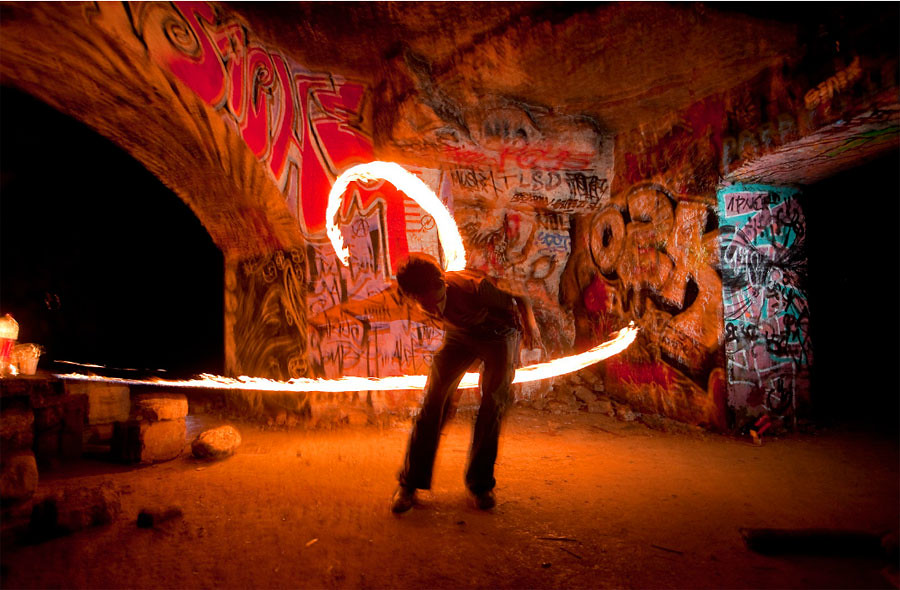
1. A fire thrower named Louis spins light at a gathering in an old quarry. More than 180 miles of quarry tunnels snake through the foundations of Paris, nearly all of them off-limits. Parties happen anyway.
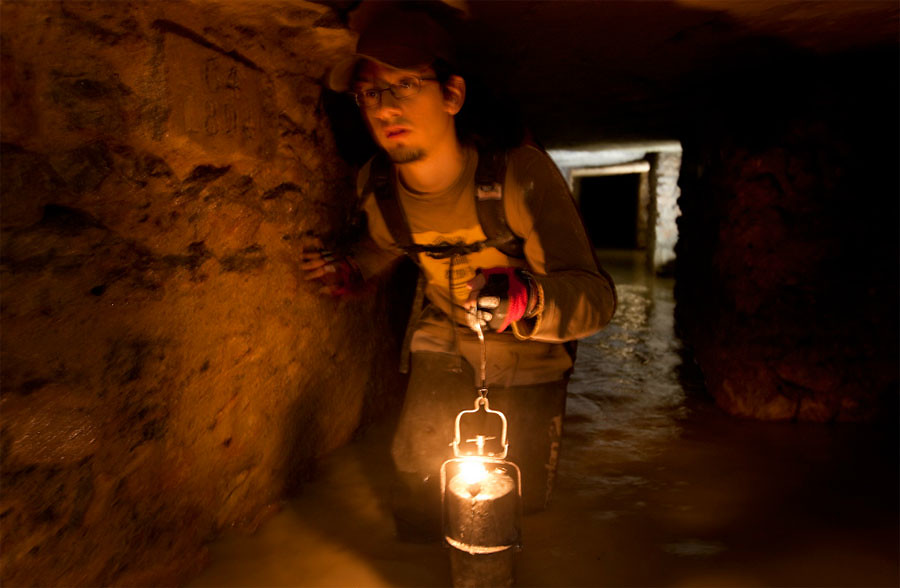
2. A city inspector drops down a shaft into a quarry for an inspection. Tunnels occasionally collapse.

3. Deceptive Display
Behind the neat stacks of skulls, tibias, and femurs in the Paris catacombs lies a chaos of bones. In the 18th and 19th centuries the city dug up millions of skeletons from over-flowing cemeteries and poured them at night into old quarries.
Behind the neat stacks of skulls, tibias, and femurs in the Paris catacombs lies a chaos of bones. In the 18th and 19th centuries the city dug up millions of skeletons from over-flowing cemeteries and poured them at night into old quarries.
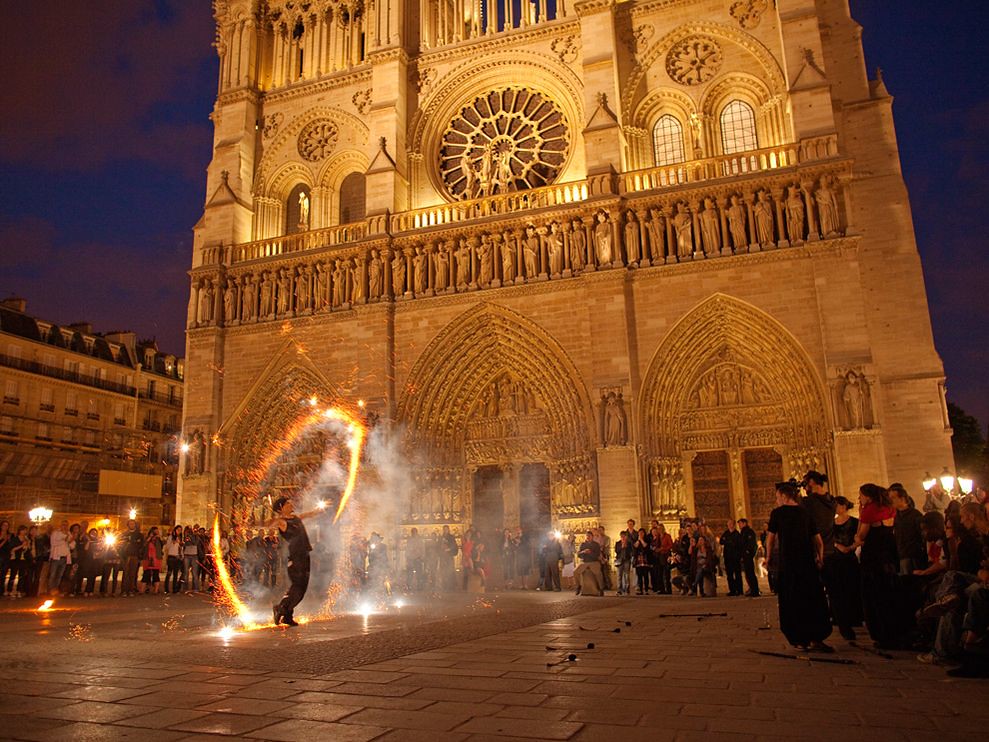
4.Finale
Sparks fly from a performance in front of Notre Dame, on the île de la Cité. Some of the 12th-century cathedral’s limestone blocks came from quarries on the Left Bank. “The history of the quarries is a history of the city,” says archaeologist Marc Viré.
Sparks fly from a performance in front of Notre Dame, on the île de la Cité. Some of the 12th-century cathedral’s limestone blocks came from quarries on the Left Bank. “The history of the quarries is a history of the city,” says archaeologist Marc Viré.

5.Pillars of Paris
City inspector Xavier Duthil checks a crude limestone pillar built by quarrymen in the early 1800s. If it were to fail today, more than a ceiling might collapse.
City inspector Xavier Duthil checks a crude limestone pillar built by quarrymen in the early 1800s. If it were to fail today, more than a ceiling might collapse.

6.Paris Gets Down
The sweat and rhythm of Saturday night fill the arched cellar of Chez Georges, in Saint-Germain-des-Prés. With limited room aboveground, many clubs and restaurants expand downward, drawing people into spaces once reserved for wine.
The sweat and rhythm of Saturday night fill the arched cellar of Chez Georges, in Saint-Germain-des-Prés. With limited room aboveground, many clubs and restaurants expand downward, drawing people into spaces once reserved for wine.

7.Paris Gets Down
The sweat and rhythm of Saturday night fill the arched cellar of Chez Georges, in Saint-Germain-des-Prés. With limited room aboveground, many clubs and restaurants expand downward, drawing people into spaces once reserved for wine.
The sweat and rhythm of Saturday night fill the arched cellar of Chez Georges, in Saint-Germain-des-Prés. With limited room aboveground, many clubs and restaurants expand downward, drawing people into spaces once reserved for wine.
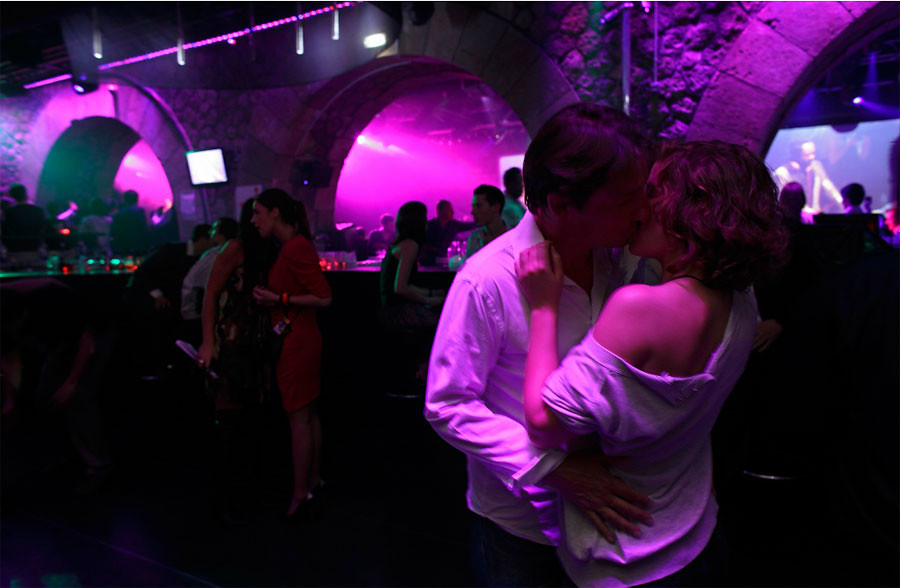
8.Paris Gets Down
Love is in the Air!
Love is in the Air!
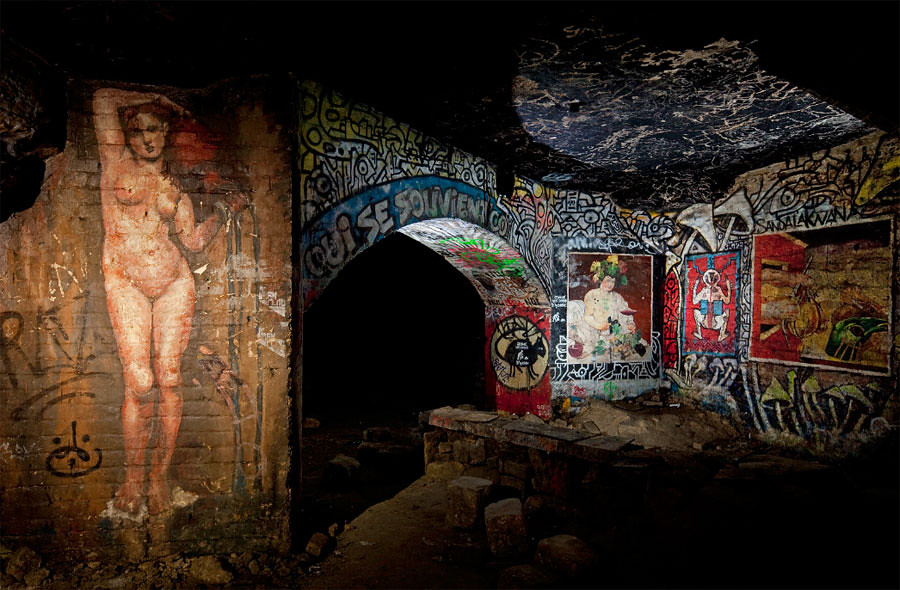
9.Three traditions of the Paris quarries—art, beer, and mushrooms—come together in a room cataphiles call Le Cellier, or “the storeroom.” Until 1968 it stored beer. After the quarries stopped being mined for limestone in the 1800s, Parisian breweries expanded into the cool underground spaces. So did mushroom growers—though the mushroom in the frescoes, painted in the past few decades, is not the famous champignon de Paris, the common button mushroom that was grown in the quarries. It’s a psychedelic variety.
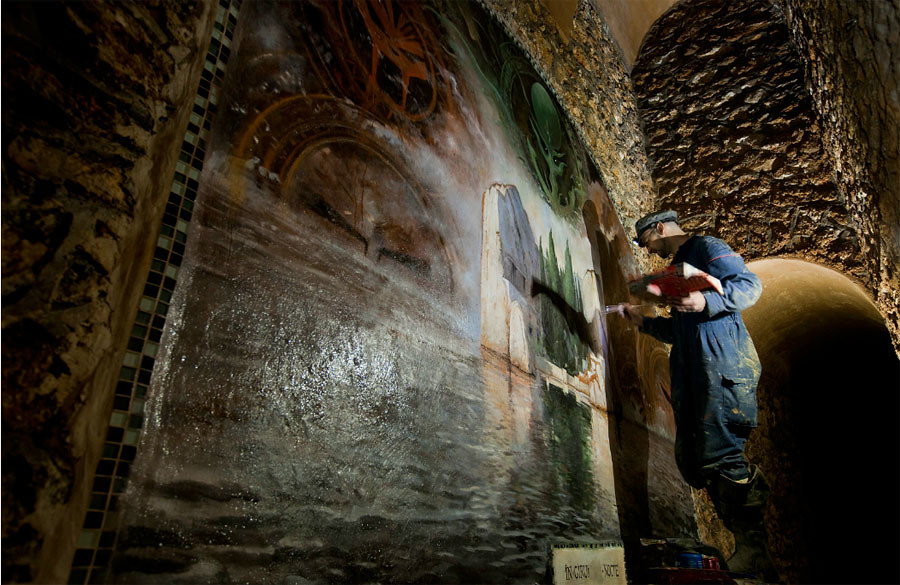
10.In an abandoned quarry tunnel under Paris, with the faint rumble of Métro trains far overhead, a painter known as Lone adds the last strokes to his masterpiece: a mural based on Swiss artist Arnold Böcklin’s “Isle of the Dead.” Entering the quarries is illegal, so cataphiles like Lone prefer nicknames. It took him more than a year to finish the painting. In all, he estimates he has spent 2,500 hours in the quarries.

11.The Beach
In a sandy chamber known as the “beach,” a wave rolls across a wall painted (and repainted) by cataphiles in the style of Japanese printmaker Hokusai. Such works can take hundreds of hours—the painting but also the carrying in of supplies.
In a sandy chamber known as the “beach,” a wave rolls across a wall painted (and repainted) by cataphiles in the style of Japanese printmaker Hokusai. Such works can take hundreds of hours—the painting but also the carrying in of supplies.
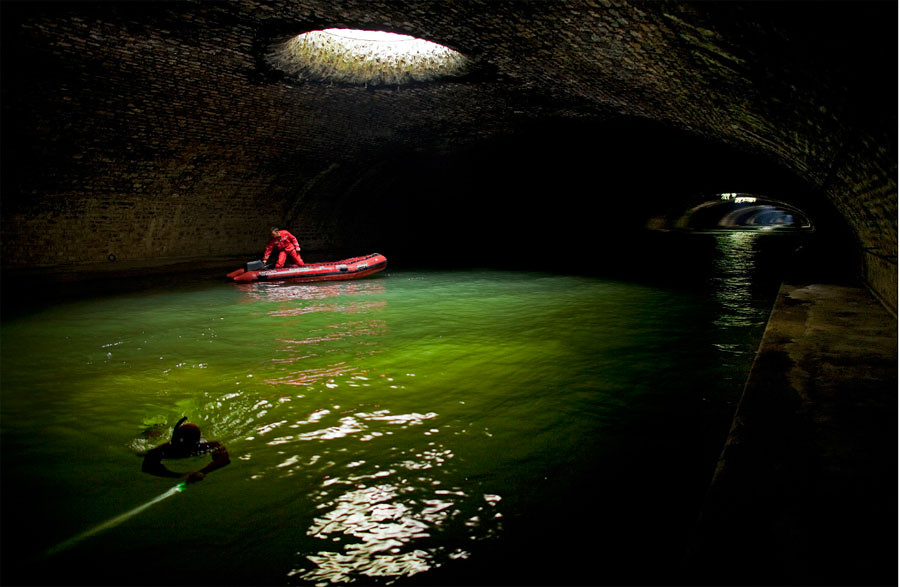
12.Portal
Sunlight from a boulevard falls on firefighters practicing underwater rescues in the Canal Saint-Martin, whose construction was ordered by Napoleon in 1802. The canal runs from the Seine near the Bastille to the northern edge of Paris.
Sunlight from a boulevard falls on firefighters practicing underwater rescues in the Canal Saint-Martin, whose construction was ordered by Napoleon in 1802. The canal runs from the Seine near the Bastille to the northern edge of Paris.
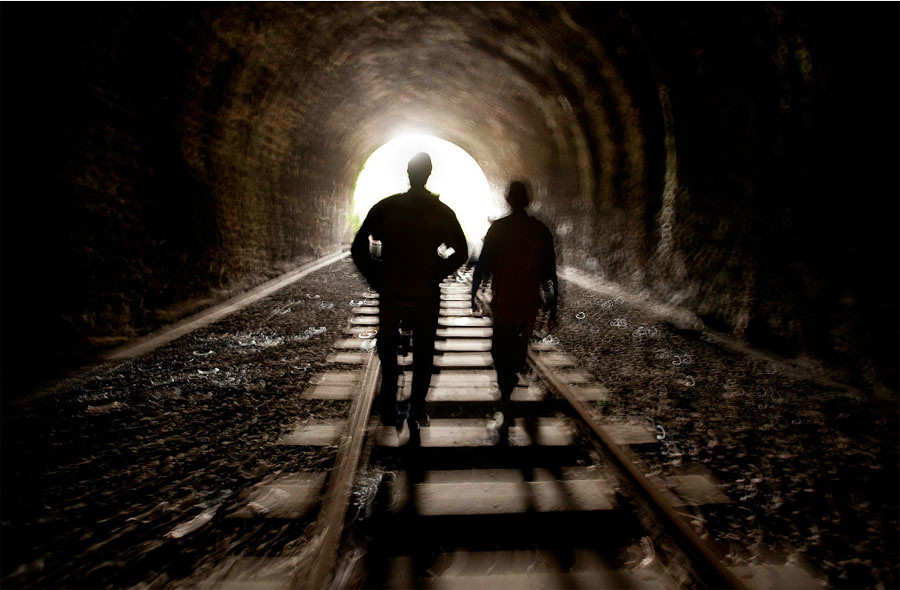
13.Bonjour to All That
Cataphiles Yopie and Dominique head for the surface through an abandoned train tunnel after scuba diving in a flooded quarry. Like many of their peers, they love the freedom underground. “At the surface there are too many rules,” Yopie says. “Here we do what we want. Where else is that possible?”
Cataphiles Yopie and Dominique head for the surface through an abandoned train tunnel after scuba diving in a flooded quarry. Like many of their peers, they love the freedom underground. “At the surface there are too many rules,” Yopie says. “Here we do what we want. Where else is that possible?”
Source: Alvarez Photgraphy
